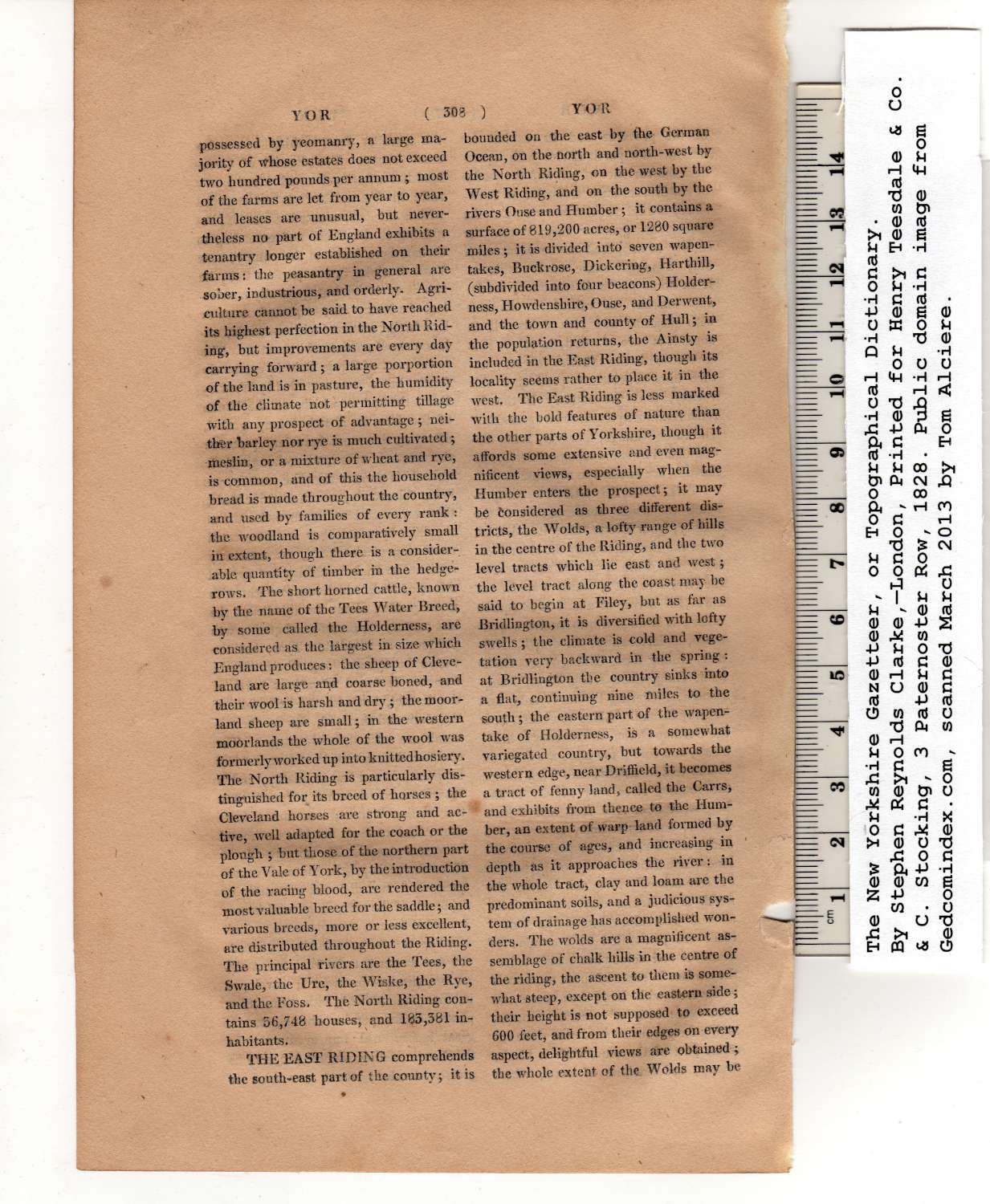|
possessed by yeomanry, a large ma-
jority of whose estates does not exceed
two hundred pounds per annum ; most
of the farms are let from year to year,
and leases are unusual, but never-
theless no part of England exhibits a
tenantry longer established on their
farms: the peasantry in general are
sober, industrious, and orderly. Agri-
culture cannot be said to have reached
its highest perfection in the North Rid-
ing, but improvements are every day
carrying forward; a large porportion
of the land is in pasture, the humidity
of the climate not permitting tillage
with any prospect of advantage; nei-
ther barley nor rye is much cultivated;
meslin, or a mixture of wheat and rye,
is common, and of this the household
bread is made throughout the country,
and used by families of every rank :
the woodland is comparatively small
in extent, though there is a consider-
able quantity of timber in the hedge-
rows. The short horned cattle, known
by the name of the Tees Water Breed,
by some called the Holderness, are
considered as the largest in size which
England produces: the sheep of Cleve-
land are large and coarse boned, and
their wool is harsh and dry; the moor-
land sheep are small; in the western
moorlands the whole of the wool was
formerly worked up into knitted hosiery.
The North Riding is particularly dis-
tinguished for its breed of horses ; the
Cleveland horses are strong and ac-
tive, well adapted for the coach or the
plough ; but those of the northern part
of the Vale of York, by the introduction
of the racing blood, are rendered the
most valuable breed for the saddle; and
various breeds, more or less excellent,
are distributed throughout the Riding.
The principal rivers are the Tees, the
Swale, the Ure, the Wiske, the Rye,
and the Foss. The North Riding con-
tains 36,748 houses, and 183,381 in-
habitants.
THE EAST RIDING comprehends
the south-east part of the county; it is |
bounded on the east by the German
Ocean, on the north and north-west by
the North Riding, on the west by the
West Riding, and on the south by the
rivers Ouse and Humber; it contains a
surface of 819,200 acres, or 1280 square
miles; it is divided into seven wapen-
takes, Buckrose, Dickering, Harthill,
(subdivided into four beacons) Holder-
ness, Howdenshire, Ouse, and Derwent,
and the town and county of Hull; in
the population returns, the Ainsty is
included in the East Riding, though its
locality seems rather to place it in the
west. The East Riding is less marked
with the bold features of nature than
the other parts of Yorkshire, though it
affords some extensive and even mag-
nificent views, especially when the
Humber enters the prospect; it may
be Considered as three different dis-
tricts, the Wolds, a lofty range of hills
in the centre of the Riding, and the two
level tracts which lie east and west;
the level tract along the coast may be
said to begin at Filey, but as far as
Bridlington, it is diversified with lofty
swells; the climate is cold and vege-
tation very backward in the spring :
at Bridlington the country sinks into
a flat, continuing nine miles to the
south; the eastern part of the wapen-
take of Holderness, is a somewhat
variegated country, but towards the
western edge, near Driffield, it becomes
a tract of fenny land, called the Carrs,
and exhibits from thence to the Hum-
ber, an extent of warp land formed by
the course of ages, and increasing in
depth as it approaches the river: in
the whole tract, clay and loam are the
predominant soils, and a judicious sys-
tem of drainage has accomplished won-
ders. The wolds are a magnificent as-
semblage of chalk hills in the centre of
the riding, the ascent to them is some-
what steep, except on the eastern side;
their height is not supposed to exceed
600 feet, and from their edges on every
aspect, delightful views are obtained ;
the whole extent of the Wolds may be |
